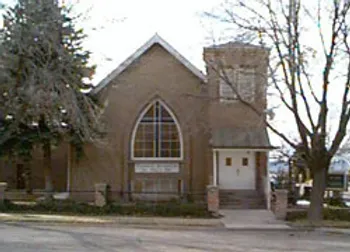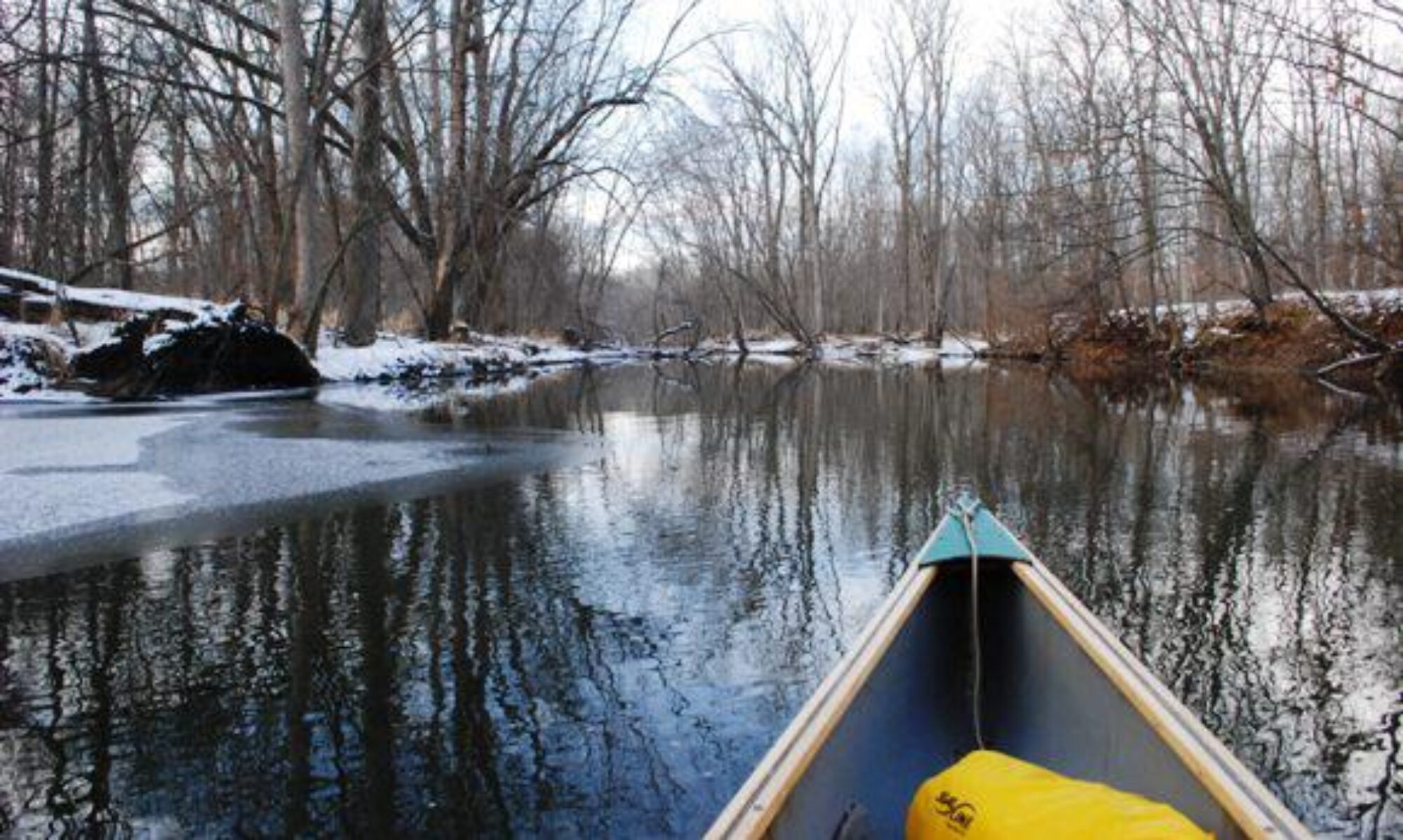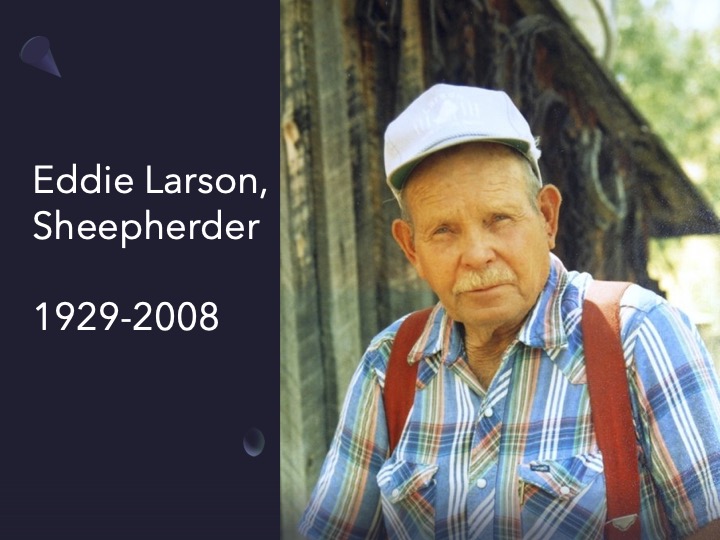Last Sunday, I preached on the 23rd Psalm. Today, I thought I would share the story of another shepherd, a man I knew when I lived in Utah.

“How are we today,” Eddie asked with a big grin.
I always found him cheerful even though he’d known his share of heartache. His wife, Ned, the love of his life, had died of cancer in 1990, a few years before I met him. In his living room was a photograph of a large aspen tree. When the tree was small, Eddie had carved a heart and added his name along with the names of his wife and daughter. Carving on aspens was common among sheepherders. Eddie had forgotten about this tree, but as it grew so did the carving and one day a hunter came upon it. He photographed the tree, framed it, and presented it to Eddie as thanks for allowing him to hunt on his land. Eddie was pleased.
Eddie also loved his daughter. He doted on her and made sure she was well cared for. She was a few years older than me and mentally challenged. Although I never asked, I couldn’t help but wonder if his wife’s cancer and his daughter’s limited mental capacity had anything to do with those blinding predawn sunrises from the west Eddie and his wife experienced back in the early 50s when the herd was on the winter range in Nevada. Above ground nuclear testing was common in that decade as Eddie started out in the sheep business. Although the government said it was safe and there was nothing to worry about from the white ash that sometimes fell afterwards, we now know otherwise.
Eddie’s early life

1927-1997
Eddie Oscar Larson was born in Southern Utah to Swedish sheepherders. His father, Oskan Ludig Larsson changed his name to Oscar Larson. He and his wife, Alma, had only one son rather late in life. Oscar was in his mid-50s and his wife in her forties when Eddie was born.
They were gentiles in a land in which most people followed the Mormon religion. There were three Swedish sheepherder families, along with a few government and railroad workers who made up the Presbyterian Church in Cedar City in the 1920s. The other two families were the Lindells, who sold out and moved in the 1950s, and the Lundgens, who are still in the area. I recently wrote about Roy Lundgen and his wife in this blog.
Eddie was first local resident to be baptized in the new church which was built in 1927, just a few years before his birth. The first baptism was for a child of the pastors, but they soon moved on. While often shunned in this religiously dominated world, his father was successful. They never lived extravagantly, but Eddie was able to go away to school. He first attended a Presbyterian boarding high school, Wasatch Academy, in Mount Pleasant, Utah. From there, he headed to Utah State in Logan, but had a hard time finding a place to stay as he was a gentile. If my memory is right, Eddie graduated from Westminster College in Salt Lake City. While he was in college, his father died.
Eddie had set out to be a coach but decided to follow his father’s footsteps and began to build a herd of sheep. While he never had the size of a herd as his father, he was very successful and limited the size to better manage his land. Eddie would run his herd, with the help of a hired hand, for most of adult life. Right before I left Cedar City and maybe five years before he died, Eddie finally sold his sheep. By this point, he was having trouble with his eyes. About a year before he died, he was moved into a nursing home. Age and illness had robbed this man of the things he enjoyed, running up and down the mountain in all kinds of weather and basking in the beauty of God’s creation.
A Proud Sheepherder
Eddie always proudly proclaimed to everyone that he was a sheepherder, even though for him it was business. For most of his time as a sheepherder, he hired another herder to stay with the sheep. This man lived in a sheep wagon and generally liked being alone. Occasionally his herder would come to town for supplies and drink, and after a few days of the latter, go back up on the mountain or out in the Nevada desert, where he’d dry out while tending and protecting the sheep.
Eddie made almost daily trips to check on his herder and the herd, bringing in groceries and feed for the horses. He’d help haul water for the sheep. Eddie kept around 1600 ewes in his herd. When that many animals are away from a watering hole, a lot of water had to be hauled. He had an old oil truck that allowed him to carry several thousand gallons of water. Such a herd also required many rams, along with horses and dogs to help with the work.
At night, Eddie did the books and dealt with government leases. Although Eddie was one of the largest landowners around, he still leased land for grazing, especially for winter pasture in eastern Nevada. The annual livestock banquet in Cedar City often honored Eddie. There, this humble man seemed larger-than-life. People knew he worked hard, and it paid off. Not only did he have a successful operation, he own a huge parcel of land up on the mountain, some in Nevada including a four acre spring that was the envy of Las Vegas, and a lot of commercial real estate in Cedar City.
The Seasons according to a sheepherder
Eddie lived by the rotation of the earth. In the summer, the ewes and lambs would feast on the grass in the high mountain plateaus. In late summer or early fall, he culled the lambs from the ewes and trucked them to market. It was always a guess as to how long to wait. The longer the lambs ate the mountain grass, the heavier they were and the more profit they’d bring. However, there was always the risk of early snows trapping the herd and then Eddie would have to haul in feed. This would eat up any profit he might have made.
Some years were harder than others. There was the year of the fire. With much of the grass on his range burned, the lambs had to be sold off early, when they were a good 20 pounds light. On another occasion, he told me about an early snow. The lambs had already been sold, but the ewes remained on the mountain. His truck was stuck in the deep snow. It took him a day to walk out. Hhis herder stayed with the herd which was nearly immobilized by deep snow. Getting back to town, he hired a bulldozer to come and clear a path so the sheep could make it down the mountain.
In the fall, as the aspen turn bright yellow, he’d ride a horse, trailing the sheep down the mountain and around the south end of town, using a 100-year-old livestock trail. As the days shortened, he and his hired herder would move the sheep from one alfalfa field to another, where the sheep would eat the remains left from the harvest as they moved toward their winter pasture in Nevada.
By December, the sheep roamed around the deserts of eastern Nevada, between Caliente and Pioche, where they ate sage and what grass remained from the summer. If there was snow on the ground, it was easy work. The sheep could also eat snow for moisture. But if there was no snow, Eddie and his herder had have to drive the old tank trunk to the warm springs at Panaca or another spring on the west side of his property, where they would fill it up and haul the water back to the sheep.
At the end of winter, Eddie’s sheep got to ride in trucks back livestock trailers as they headed east to the lambing barns near Kanarraville. They first sheared the sheep. Usually by men from Australia and New Zealand sheared the herds in the American West from late February through April. These crews would then returned home, shearing sheep Down Under in their spring which is our fall. Lambing always came after shearing. A sheared ewe had less problems giving birth. For a few weeks, Eddie would hire a host of people to help him by serving as mid-wives to the ewes. He was always in church on Sundays, except for this time of the year in which Easter often fell. During lambing, he lived by the lambing sheds.
Finally, as the weather warmed and the snows retreated on the mountain, they’d move the herd up to higher elevations, where the cycle would repeat itself.
My experience with Eddie
Part of the reason I felt called to Community Presbyterian Church in 1993 was the congregation’s vision of expanding and building a new church building. Eddie, the first local child baptized in the old church, volunteered to help raise the money for the new complex! He shared the vision for the church to grow and to serve the community he loved and helped us achieve it. We moved into a church complex in 1997. Just before I left Cedar City, in January 2024, Eddie donated mountain land to the congregation for use as a camp and perhaps a future conference center.
I am thankful for the few times I took Eddie up on his invitations to take a day off and ride with him. We’d head out early. Sometimes we stop for breakfast or coffee. In his truck, he’d have some groceries and a few tools to repair fences or gates, maybe a salt block or two. Depending on where the herd was located, we’d drive an hour or two, all the while Eddie told stories about his dad and about the sheep business and about how lazy the cattlemen could be.
There is little love between sheepherders and cattlemen, a feud that goes back into the 19th Century. Part of the anger between the two groups is that sheep can eat grass down to the dirt and if the cattle come in after the sheep, they are unable to graze. Another source of conflict came, according to Eddie, from the sheepherders who work harder, but also tend to make a lot more money than those who tend cattle. However, after World War II, many sheepherders sold their lambs for cattle.
When we were on the range, lunch was always at the sheepherder’s wagon. In the summer, we’d sit around under cottonwood trees. In winter, we’d all crowd inside the wagon, to get out of the cold and wind. The smells were enchanting. Pinion burned in the stove as coffee perked. Mutton was always served. Some days we’d eat it with potatoes and carrots, other days we’d have it in a sandwich, the bread slathered with mayonnaise and cheese. We’d wash it all down with coffee.
Some afternoons we’d scout out the next spot for the camp. Others, we’d take the tank truck out to the spring for water. As we drove around, Eddie would talk about the land. He showed me where he worked to stop erosion and to restore the grass that use to be more abundant. Over-herding animals in the first half of the 20th Century had taken its toll. When Eddie got into the business, he decided to run half as many sheep on the land as his dad and the previous tenants. His decision was slowly paying dividends and he was proud of his work and of his land. After he’d finished with the chores for the day, as the sun dropped in the sky, we’d head back toward town.
Eddie’s death
“When I was in my 20s and just starting out, I was told by another herder that sheepherding was a young man’s business,” Eddie confided in me one day. “Now I believe him.” Eddie died in 2008 at the age of 79. He was finally able to relax and let the Good Shepherd take over.



Thanks Jeff. We all loved and respected Eddie. I am glad to learn more of his story. Jennifer his daughter is always in church, cheerful as ever.
Thank you for commenting, Laura. I am glad Jennifer is still involved in the church. I assume she still puts together puzzles?
The atomic/nuclear testing done close to people and telling them it was safe was really awful on their part. This was a nice tribute to him.
Thanks. The above ground nuclear testing was horrible and affected so many people who lived downwind
Thank you, Jeff. I am glad to learn more about Eddie and his life. I never knew much about sheepherding until I moved to Idaho. A lot of folks from the Basque country moved here and that was their job.
I first saw sheepherders at work in the Sawtooth Mountains in Idaho when I ran a camp there the summer of 1988!
He had a good life with a lot of sadness, but still too short.
You’ve written a beautiful tribute to your friend. I loved the part about the carving in the tree. Love that keeps growing.
“Love that keeps growing,” I love it!
I’ve never met a sheepherder before. I am honored.
You left the punchline off: What happened to his herd?
They’re still a few sheepherders in the American West.
A lovely remembrance. I’ve always wondered if my parents’ untimely deaths from cancer had anything to do with their possible exposure to testing when they were out west.
Testing atomic and nuclear bombs downwind of people in the West was a terrible idea. There was a lot of cancer from people I knew when I lived in Utah.
A very nice remembrance.
Thank you.
I’m glad that he had a peaceful death 😀